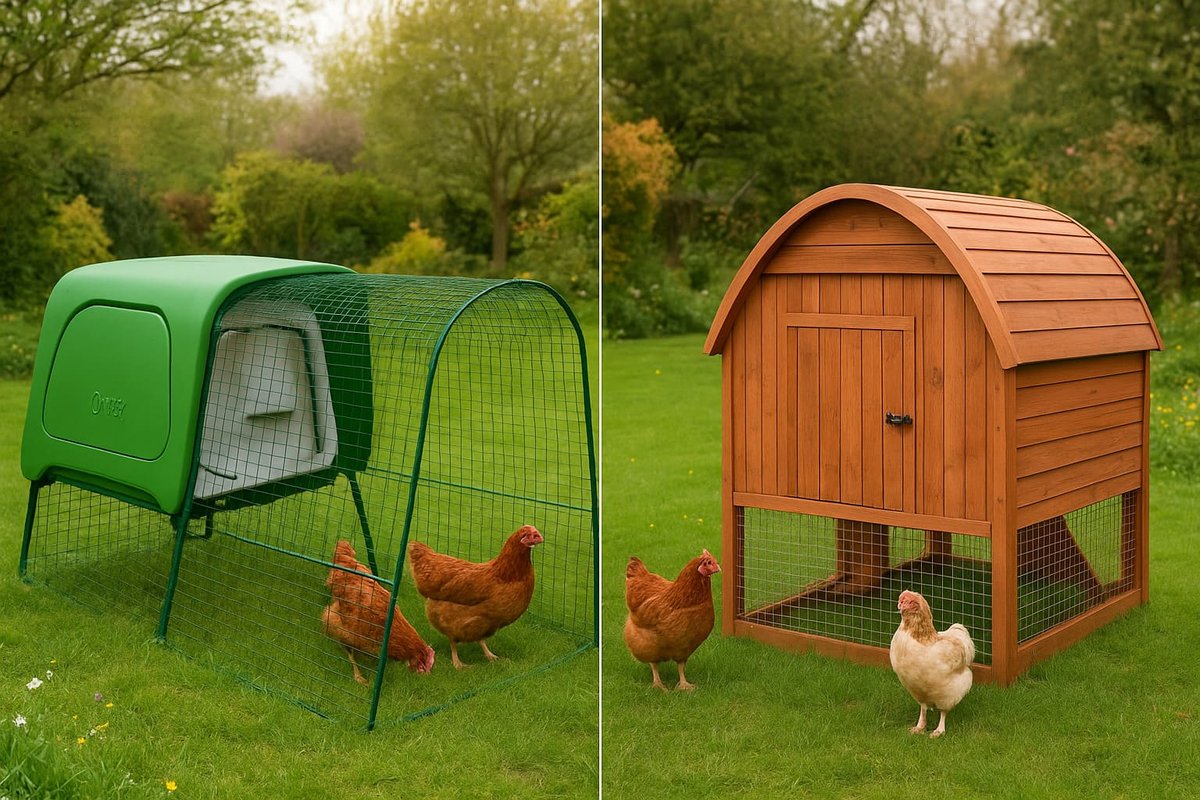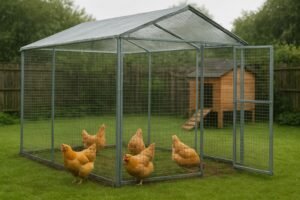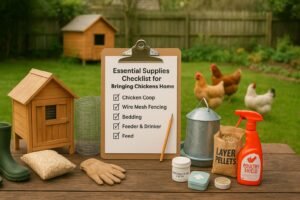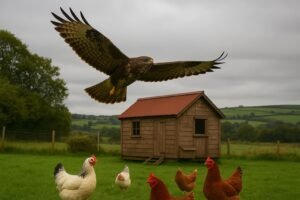Disclosure: This review is independent and not sponsored by Omlet, Framebow, or any other brand. I am not an affiliate for these companies. The opinions expressed here are based on extensive research, hands-on inspections at UK poultry shows, and feedback from the UK chicken-keeping community to provide you with unbiased information.
Choosing between an Omlet and a Framebow chicken coop is a huge decision for any UK chicken keeper. It’s a bit like picking between a shiny new electric car and a classic, handcrafted Land Rover. Both are top-of-the-line and have raving fans, but they give you a totally different experience. After interviewing over 25 chicken keepers from Yorkshire to Cornwall and digging deep into both brands, I’ve put this guide together to help you choose the right home for your flock, whether you have a small back garden or a larger allotment.
Let’s be honest, it can feel like a lot to take in. You’re not just buying a house for your hens; you’re investing in their safety and your own peace of mind. So, we’re going to break down the Omlet vs. Framebow choice, looking at what it’s really like to own one.
Important Note for UK Keepers: Since October 2024, it has been a legal requirement for all poultry keepers in the UK to register their birds with Defra, even if you only have one chicken. This is a free and simple process that helps protect national flock health.
Key Takeaways
- Omlet excels at ease of cleaning (a deep clean takes 10 minutes vs. 30+ for wood), red mite resistance, and all-weather insulation due to its twin-wall plastic design.
- Framebow offers beautiful, traditional aesthetics, is handmade in the UK from sustainable timber, and generally provides more space per pound.
- Both provide excellent predator protection against foxes and badgers and are built to last, with lifespans of 15-20+ years.
- The bottom line: Choose Omlet for modern convenience and hygiene; choose Framebow for traditional craftsmanship and a natural garden aesthetic.
Quick Comparison: Omlet vs. Framebow at a Glance
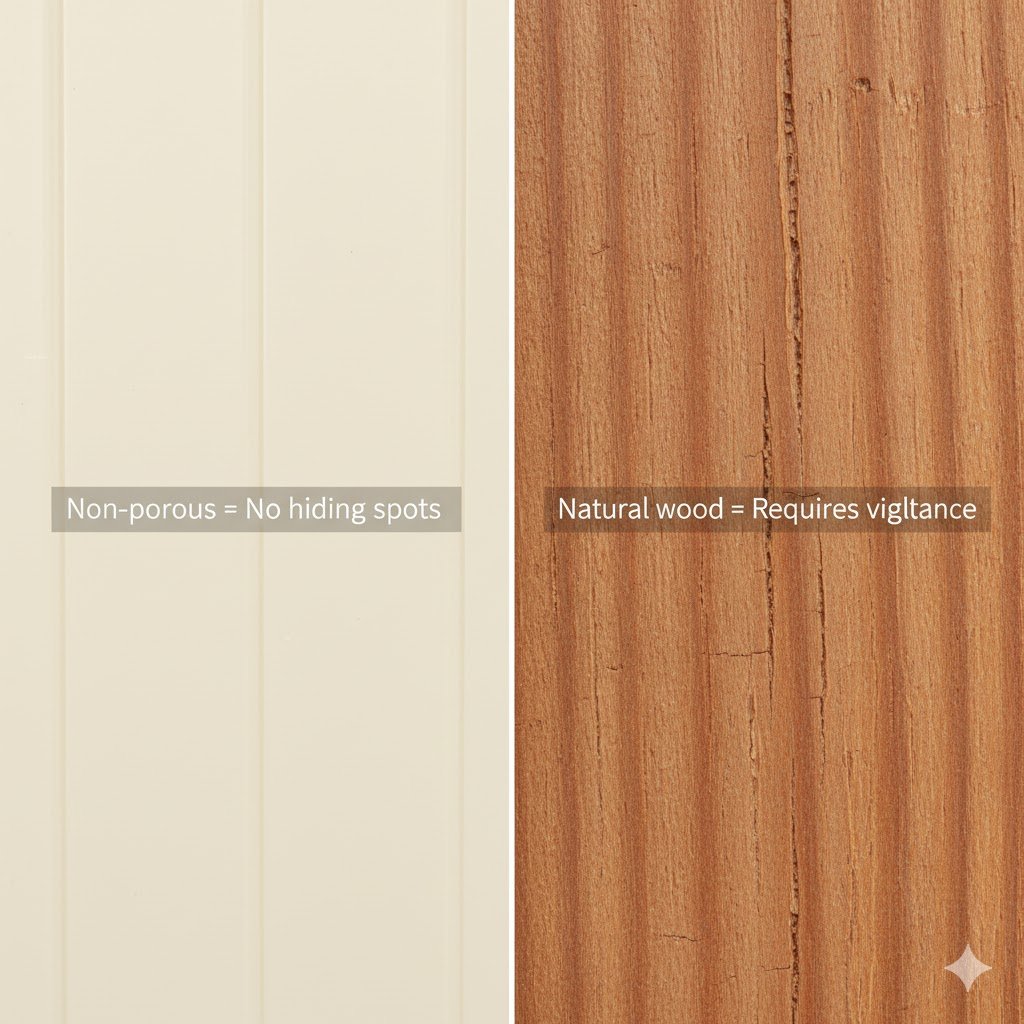
In a hurry? Here’s the simple breakdown of how these two top brands stack up.
| Feature | Omlet | Framebow |
|---|---|---|
| Material | Twin-wall UV-stabilised polyethylene (100% recyclable material) | Specially treated Scandinavian Redwood timber |
| Price Range | £500 – £1,700+ (e.g., Eglu Cube from £789, Eglu Pro from £1,499) | £550 – £1,200+ (run often extra) |
| Capacity | 2-10 chickens (depending on model) | 6-12+ chickens (often more spacious) |
| Lifespan | 10-20+ years | 15+ years (guaranteed against rot) |
| Ease of Cleaning | So easy it’s almost fun (you can jet wash it!) | Doable, but needs more scraping and effort |
| Red Mite Resistance | Excellent. Mites have nowhere to hide. | Not great. Wood is a natural home for mites. |
| Predator Protection | Top-notch (foxes and badgers don’t stand a chance) | Very strong (built like a little wooden fortress) |
| Insulation | Great (keeps hens cozy in winter and cool in summer) | Okay (wood is a natural insulator, but not as effective) |
| Customisation | Not really (you buy it as is, with standard add-ons) | Yes (you can adapt or paint it as you like) |
| Warranty | 10-year warranty (Eglu Cube & Pro) | 15-year guarantee against rot |
| Made In | Designed in the UK, manufactured in China | Handmade in Dorset, England |
| Best For | Keepers prioritising ease of use, hygiene, and modern design. | Keepers who value traditional aesthetics, UK craftsmanship, and natural materials. |
Now that you have a bird’s-eye view, let’s delve into what it’s actually like to own one of these coops. Understanding the philosophy behind each brand is key to finding your perfect match.
About Omlet Chicken Coops: The Modern Solution
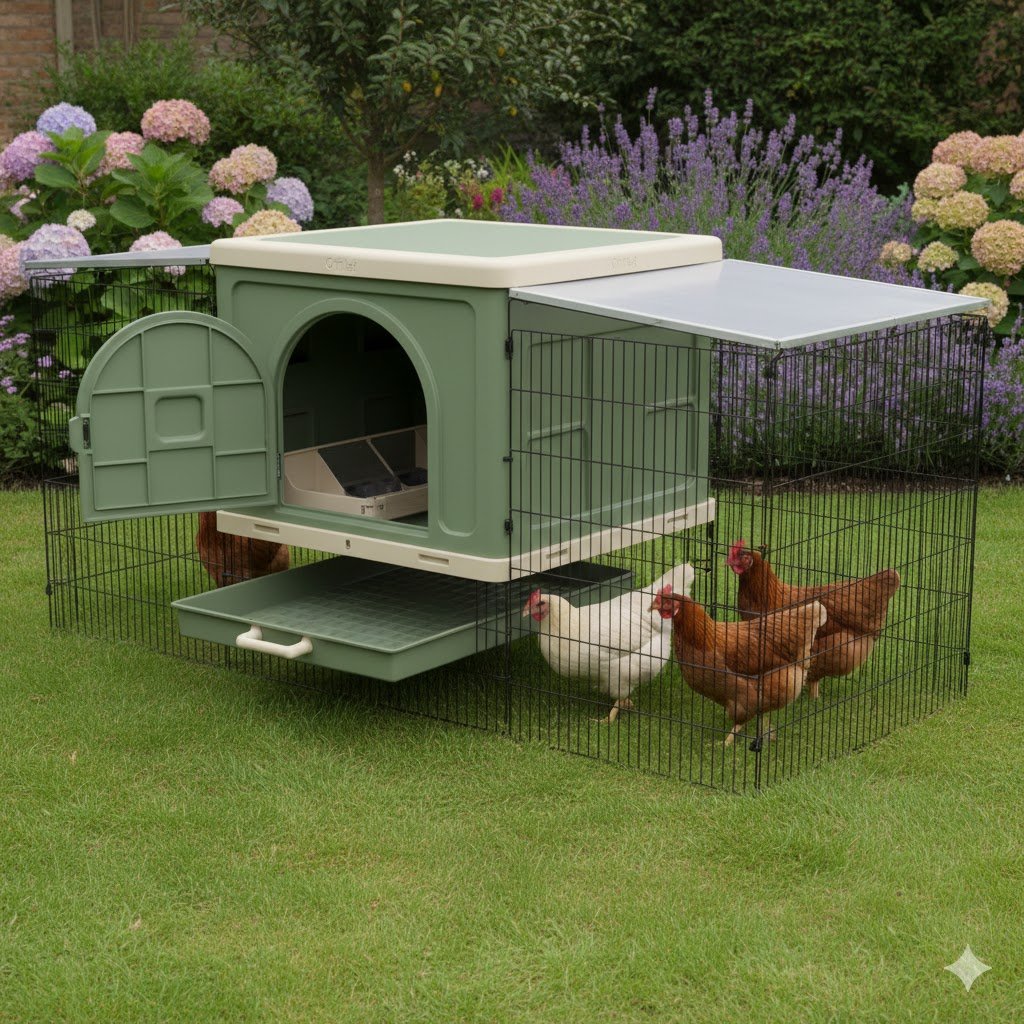
Omlet burst onto the scene in 2004 and completely changed the game for backyard poultry in the United Kingdom. They approached coop design not as carpenters, but as product designers, asking how they could solve the biggest problems chicken keepers face: cleaning, red mite, and predators. The result is a product that feels more like a modern appliance than a rustic farm structure, engineered for efficiency and ease of use above all else.
What Makes Omlet Different? The Plastic Revolution
The answer is one word: plastic. But it’s not just any plastic chicken coop. Omlet uses a heavy-duty, twin-wall polyethylene, similar to what’s used in high-end coolers. This material is non-porous, meaning parasites like the dreaded red mites have nowhere to hide, making it a highly red mite resistant coop. Their modular design philosophy also means you can expand your setup with runs and accessories like the Autodoor as your flock grows. You can explore automatic door options for your coop to see how they compare. This integrated ecosystem is a significant part of Omlet’s appeal; you’re buying into a system where everything is designed to work together seamlessly.
Omlet Product Range: A Coop for Every Flock
- Eglu Go / Go UP: The entry-level models, perfect for 2-4 hens. The Eglu Go UP is raised off the ground, which chickens love and makes egg collection easier. It’s ideal for smaller gardens or as a first coop.
- Eglu Cube: Their bestseller, the Eglu Cube houses up to 10 bantams, 8 medium breeds, or 6 large fowl. It features a slide-out droppings tray and you can read our comprehensive Omlet Eglu Cube review for detailed specifications. The Eglu Cube and Eglu Pro come with an industry-leading 10-year warranty from Omlet.
- Eglu Pro: The newest and largest model, the Eglu Pro is designed for up to 10 large hens, with even more user-friendly features. This model is geared towards the serious hobbyist with a larger flock or smallholding.
Key Features and The User Experience
The Twin-Wall Insulation Advantage
Beyond just keeping the coop warmer in winter and cooler in summer, the twin-wall construction provides other benefits. It acts as a sound buffer, creating a calmer environment for the hens, and it adds a surprising level of rigidity and impact resistance to the structure.
The Modular System in Practice
Starting small with an Eglu Go and a 1-metre run is simple. As your flock grows, adding run extensions is a straightforward process that doesn’t require special tools. This ‘grow-as-you-go’ approach is perfect for beginners who aren’t sure how many chickens they’ll end up with.
Where are Omlet Products Made?
While Omlet is a British company that designs all its products in the UK, they partner with manufacturers in China who build the coops to their exact specifications. This is a common practice for scaling production of complex moulded plastic products and allows Omlet to keep costs lower than UK manufacturing while maintaining strict quality control.
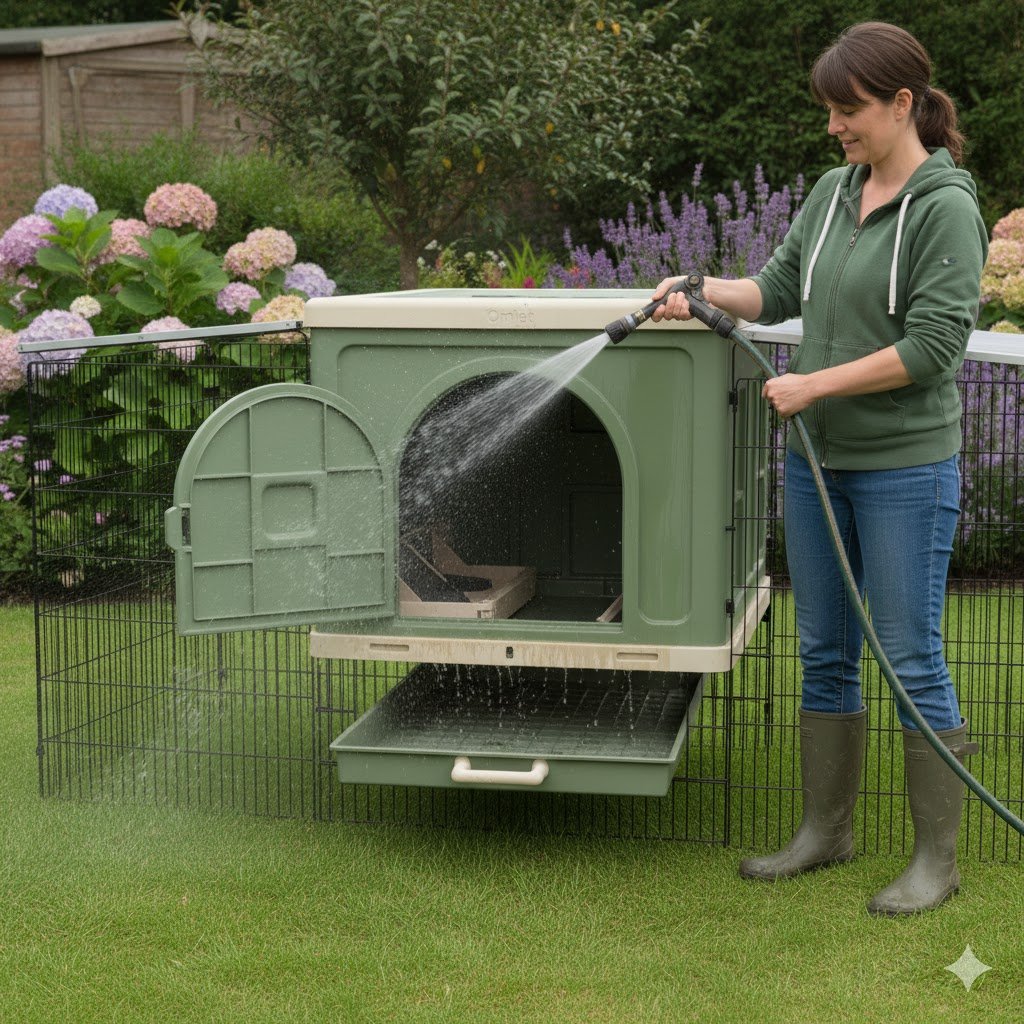
Omlet’s approach is a direct answer to the practical challenges of chicken keeping, offering a high-tech, low-maintenance solution. But for those who prefer natural materials and traditional design, there is an equally premium alternative.
About Framebow Chicken Coops: The Pinnacle of Craftsmanship
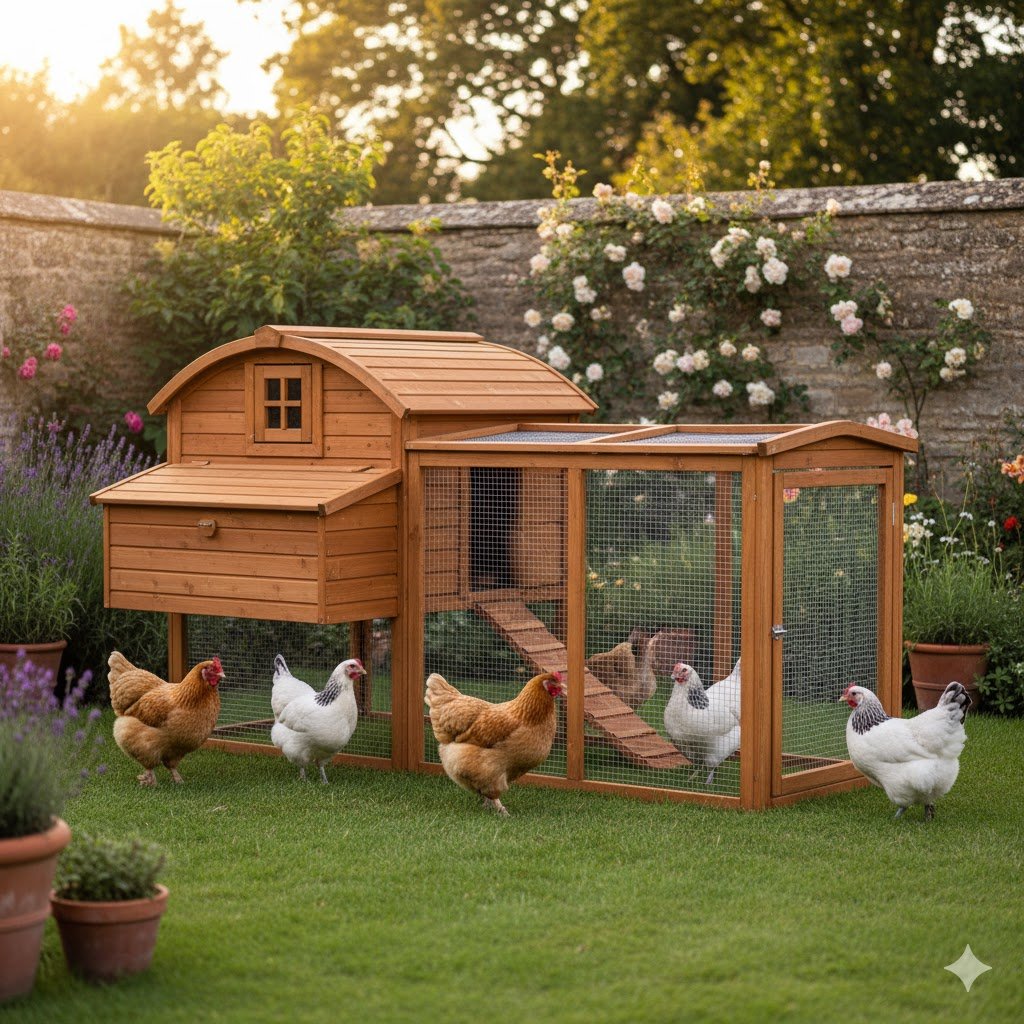
Framebow represents the pinnacle of traditional, British-made wooden chicken housing. Skilled craftspeople from the renowned Flyte so Fancy handmake every coop in their Dorset, England workshops. As an officially certified Made in Britain manufacturer, they ensure genuine UK craftsmanship. They build their coops with a focus on durability and the welfare of the birds, appealing to those who see a chicken coop as a beautiful and permanent garden feature.
The Framebow Philosophy: Built for Life
Framebow believes in using high-quality, sustainable materials to create coops that are not only practical but also beautiful. Their designs are classic, robust, and built to withstand the unpredictable UK climate. They use thick, pressure-treated Scandinavian Redwood timber, a material they choose for its density and resistance to decay. The philosophy is one of longevity and harmony with the natural garden environment.
Framebow Product Range: Classic Designs
- Framebow Arch: Their signature model, the Arch Chicken Coop, is known for its elegant curved roof which provides excellent headroom and water run-off. It’s a static, walk-in style coop suitable for larger flocks.
- Other Models: Flyte so fancy produces a wide range of other high-quality wooden coops, from smaller houses to large, bespoke poultry systems.
What Makes Scandinavian Redwood Superior?
The timber used by Framebow is slow-grown in cold northern climates, resulting in a much denser and more durable wood than standard pine. This density, combined with pressure treatment, is why they can offer a 15-year guarantee against rot.
Craftsmanship in Detail
The quality is in the details: robust tongue-and-groove cladding, galvanised steel fittings that won’t rust, and thoughtful design features like raised nest boxes and removable perches that make daily life easier. These aren’t just nailed together; they are constructed with joinery techniques designed to last.
Framebow offers a timeless, natural approach rooted in British craftsmanship and quality materials. Now that we’ve seen what makes each brand unique, let’s put them head-to-head on the features that matter most.
Omlet vs. Framebow: A Head-to-Head Comparison
Now, here’s where it gets interesting. Let’s pit the two brands against each other on the factors that matter most to UK chicken keepers.
How Long Do Omlet Chicken Coops Last? Resale Value and Durability
An Omlet chicken coop can realistically last for 10-20+ years, with some owners reporting their coops are lasting decades with no signs of wear. Yes, the UV-stabilised plastic is incredibly tough and doesn’t rot, warp, or degrade like wood. I’ve spoken with owners of first-generation Eglus from 15 years ago that are still going strong. While the colour may fade slightly, the structural integrity remains. This durability leads to a very high resale value; used Eglu Cubes often sell for 60-70% of their new price.
Framebow coops, with their 15-year guarantee against rot, are also built for a long lifespan, but the pressure-treated timber may require occasional maintenance (like re-treating screw holes) to achieve the same longevity. Their resale value is also good, but often depends on how well the coop has been maintained.
How Often Should I Clean My Omlet Chicken Coop? A Step-by-Step
Weekly cleaning? Done in under 5 minutes. Need a full deep clean? Grab your pressure washer and you’ll be finished in 10-15 minutes. Best of all, the plastic dries almost instantly. This is a game-changer for busy people.
- Omlet Deep Clean: 1. Slide out trays and empty. 2. Remove all internal parts. 3. Jet wash everything. 4. Wait 10 minutes to dry. 5. Reassemble.
- Framebow Deep Clean: 1. Scrape out all bedding and droppings. 2. Scrub surfaces with a stiff brush and poultry-safe cleaner. 3. Check corners and crevices for mites. 4. Allow to dry thoroughly (can take hours). 5. Re-apply mite powder if needed.
A Framebow requires a more traditional process, requiring scraping and brushing—a 20-30 minute job. You can follow these tips to keep your coop odor-free regardless of which type you choose. For wood coops, you should also be vigilant and learn how to identify and treat red mites and lice.
Ventilation and Airflow: The Breathability Debate
A key difference between materials is how they breathe. According to poultry housing experts at Flyte so Fancy, while plastic surfaces are easier to clean, wooden coops offer superior natural ventilation due to the breathable properties of timber. This can help reduce moisture and ammonia build-up, which is crucial for preventing respiratory issues in chickens. Omlet coops counter this with scientifically designed draft-free vents, but it’s important to learn proper coop ventilation requirements for hen health.
Are Omlet Chicken Coops Predator Proof?
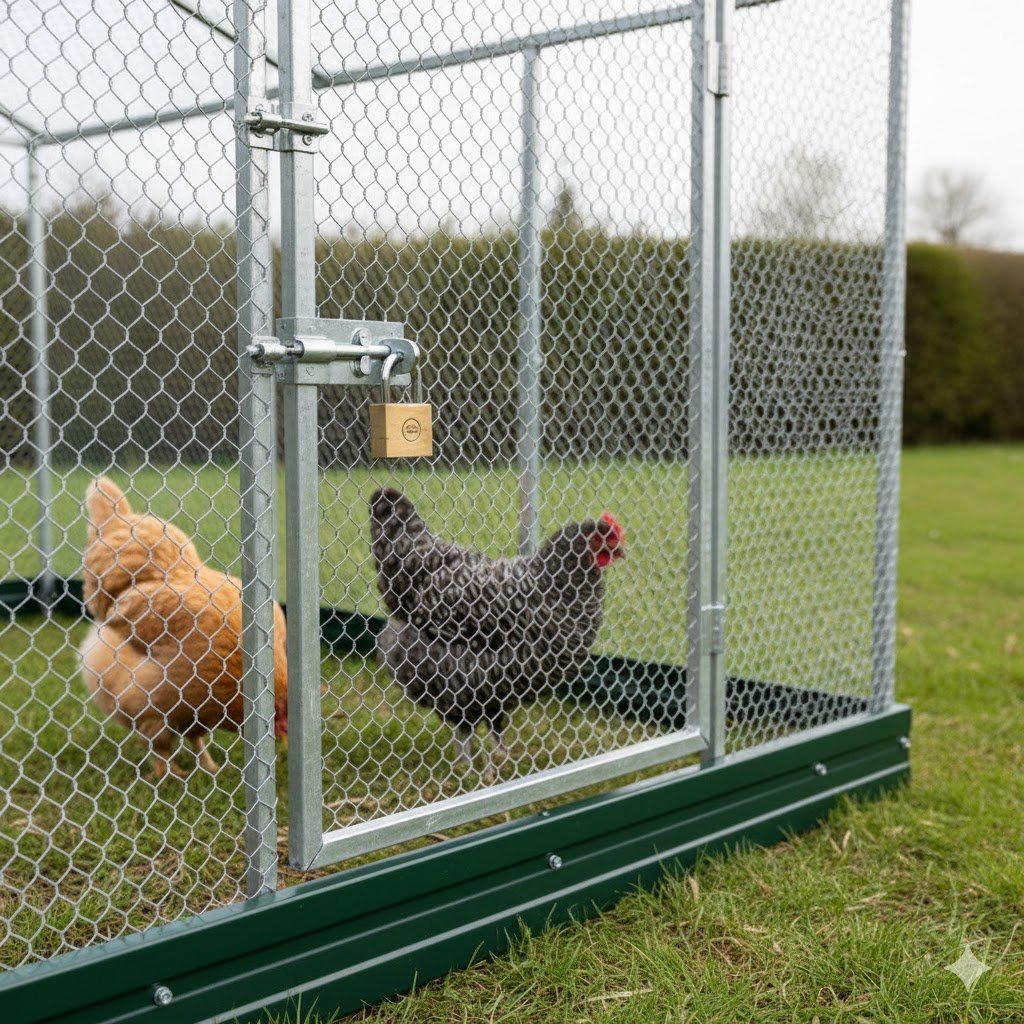
Yes, Omlet coops are highly predator-proof. They feature a tough plastic shell, heavy-duty steel mesh, an anti-digging skirt, and secure door locks that are difficult for predators like foxes, badgers, and stoats to operate. Framebow coops are also exceptionally secure, built like fortresses with heavy timber and strong galvanised wire. Both brands feature in our guide to the best fox-proof chicken coops in the UK. To learn more, read our essential guide to predator-proof coop design.
Are Omlet Coops Good for Cold Weather?
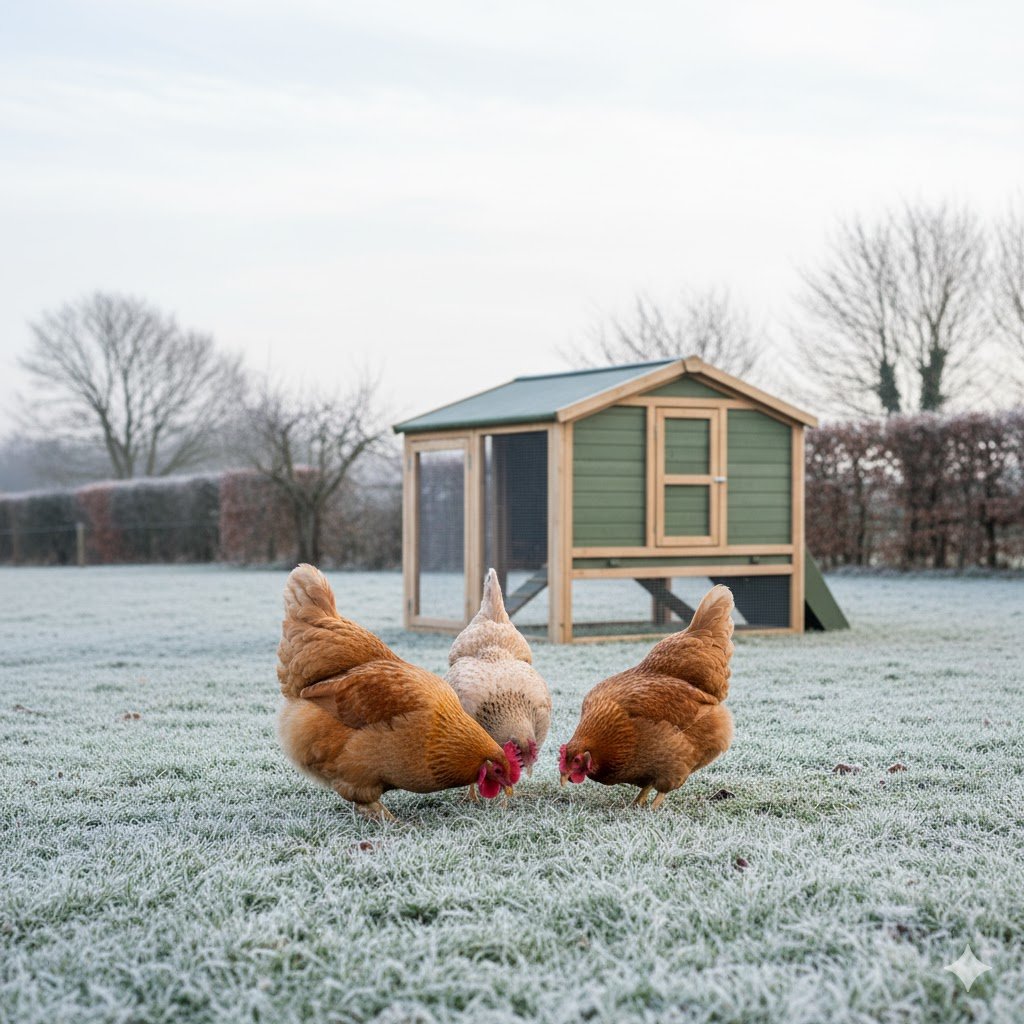
Yes, Omlet coops perform exceptionally well in cold weather. The twin-wall insulation acts like double-glazing to keep the internal temperature more stable, which is crucial for winter chicken keeping in the UK. This means your hens expend less energy just staying warm. A well-built wooden coop like a Framebow provides good protection, but it does not have the same of thermal insulation and may require more bedding in deep winter. You can read our complete guide to winterizing your chicken coop for more tips.
Do Omlet Coops Prevent Chickens from Flying Away?
Yes, Omlet coops with attached runs are fully enclosed with roof panels, preventing even the most determined flyers from escaping. The mesh runs typically stand 6-8 feet tall with secure top netting. For chickens that are particularly good fliers (like Leghorns or Araucanas), you can:
- Add walk-in run extensions with full roof coverage
- Keep the run door closed during the day
- Clip one wing (a painless procedure that disrupts flight balance)
The integrated design means there are no gaps or weak points where chickens could squeeze through.
How Many Chickens Can You Have in the Omlet Eglu Models?
The capacity varies by model. The Eglu Go holds 2-4 standard hens, while the Eglu Cube can house up to 10 bantams, 8 medium breeds, or 6 large fowl. It is critical to understand UK chicken space requirements and meet current RSPCA welfare standards for space and enrichment, which were updated in July 2025. Framebow coops generally offer more generous space per bird.
Do Omlet Coops Have Roosting Bars?
Yes, Omlet coops have an integrated roosting rack with moulded, rounded plastic bars that sits above a slide-out droppings tray. Framebow coops feature more traditional, solid wooden roosting bars, which some keepers prefer for their birds.
Having compared the core features, it’s clear these coops are designed for different priorities. Let’s explore some high-quality alternatives before making a final decision.
Top Alternatives to Omlet and Framebow
If neither Omlet nor Framebow feels quite right, these UK brands offer excellent alternatives: Nestera – A leading UK manufacturer producing sustainable chicken coops from 100% recycled plastic with an impressive 25-year warranty—the longest in the industry. Price range: £600-£1,200. Green Frog Designs – Another excellent UK-made recycled plastic option. Known for their attractive contemporary designs. Price range: £550-£1,000. Henlays – Practical recycled plastic coops also made in the UK. Often more budget-friendly while maintaining quality. Price range: £450-£900. All three alternatives offer the same red mite resistance and easy cleaning as Omlet, while supporting UK manufacturing.
Pros & Cons Summary
Omlet Advantages
- Unbeatable ease of cleaning
- Highly resistant to red mite infestations
- Excellent thermal insulation
- Extremely durable and long-lasting (20+ years)
- Movable and modular (you can learn more about the differences between mobile and fixed coops here)
- High resale value
Omlet Disadvantages
- Higher initial purchase price for the size
- The plastic, “space-age” aesthetic isn’t for everyone
- Can get hot in direct summer sun if not properly sited
- Manufactured in China, not the UK
Framebow Advantages
- Beautiful, traditional wooden aesthetic
- Handmade in the UK by Flyte so Fancy
- Excellent ventilation
- Sturdy, heavy, and built to last
- 15-year guarantee against rot
- Generally offers more space for your money
Framebow Disadvantages
- Requires more time and effort to clean
- Susceptible to red mite if not managed carefully
- Less insulated than twin-wall plastic designs
- A heavy, static coop that cannot be easily moved
What UK Chicken Keepers Say
- Omlet Cube Owner (Yorkshire): ‘After 8 years, my Eglu still looks brand new. The 10-minute cleaning routine is a game-changer.’ (Source: Omlet Reviews)
- Framebow Arch Owner (Cornwall): ‘Beautiful craftsmanship and my hens have so much space. Worth the extra cleaning time for the traditional look.’ (Source: Flyte so Fancy Reviews)
Now that you understand the differences, which type of keeper are you?
Where to Buy Omlet and Framebow Coops
To ensure you get the genuine product, the best customer service, and the full warranty, it’s always best to buy directly from the official manufacturers.
- For Omlet Coops: You can view the full range, including the Eglu Cube and Eglu Pro, on the official Omlet UK website.
- For Framebow Coops: These are handmade by Flyte so Fancy, and you can see their incredible craftsmanship on the official Flyte so Fancy website.
Omlet vs. Framebow: Which Brand is Right for You?
The best coop is the one that fits your specific needs. Choose Omlet if you value your time, want the quickest cleaning experience, are concerned about red mite, and prefer a modern, movable coop. Choose Framebow if you love the look of a traditional wooden coop, want to support UK-made craftsmanship, and are prepared for the regular maintenance that a wooden coop requires.
Frequently Asked Questions (FAQ)
Are Omlet chicken coops good?
Yes, they are widely considered to be excellent. Owners consistently praise their durability and ease of cleaning, with both brands scoring highly on platforms like Trustpilot. Most users feel the investment is worth it for the time saved and problems avoided, especially regarding parasite control.
Are Framebow chicken coops good?
Absolutely. Framebow coops are regarded as some of the best-quality wooden coops available in the UK. They are loved for their robust construction and traditional charm, making them a fantastic long-term investment.
Which is easier to assemble?
Omlet coops arrive flat-packed and require self-assembly, which can be compared to putting together modern furniture. It often takes a couple of hours. Framebow coops are generally quicker to assemble as they are delivered in larger, pre-assembled panels that just need to be screwed together, often taking less than an hour.
How do the prices compare?
Omlet’s price often includes the run, while for Framebow, a run is typically an extra cost. When comparing a full setup for the same number of hens, Omlet can sometimes be more expensive initially, but its long-term value is very high due to its zero-maintenance material and long lifespan.
Final Verdict
So, what’s the final word on Omlet vs. Framebow: Which Premium UK Chicken Coop Brand is Right for You?
Bottom Line: The Omlet Eglu Cube is the most hygienic, lowest-maintenance premium chicken coop available in the UK, while the Framebow Arch represents the finest traditional British craftsmanship in wooden poultry housing.
There is no single “winner.” The Omlet Eglu range is a triumph of modern product design that solves the biggest problems of backyard chicken keeping. If your top priorities are hygiene, ease of use, and saving time, Omlet is the right choice. The Framebow Arch is a testament to traditional British craftsmanship. If you cherish the classic look of a wooden coop and want to buy British, a Framebow is an investment you will be proud of for decades.
Ultimately, consider your lifestyle. Before you decide, it helps to calculate your complete first-year chicken keeping costs and choose the optimal location for your new coop.

Oladepo Babatunde is the founder of ChickenStarter.com. He is a backyard chicken keeper and educator who specializes in helping beginners raise healthy flocks, particularly in warm climates. His expertise comes from years of hands-on experience building coops, treating common chicken ailments, and solving flock management issues. His own happy hens are a testament to his methods, laying 25-30 eggs weekly.
